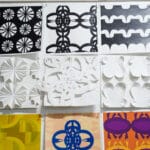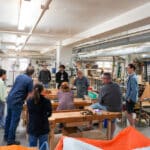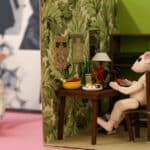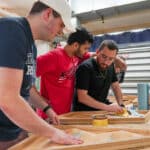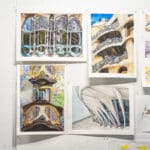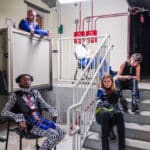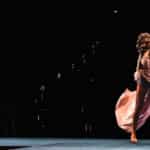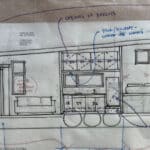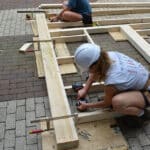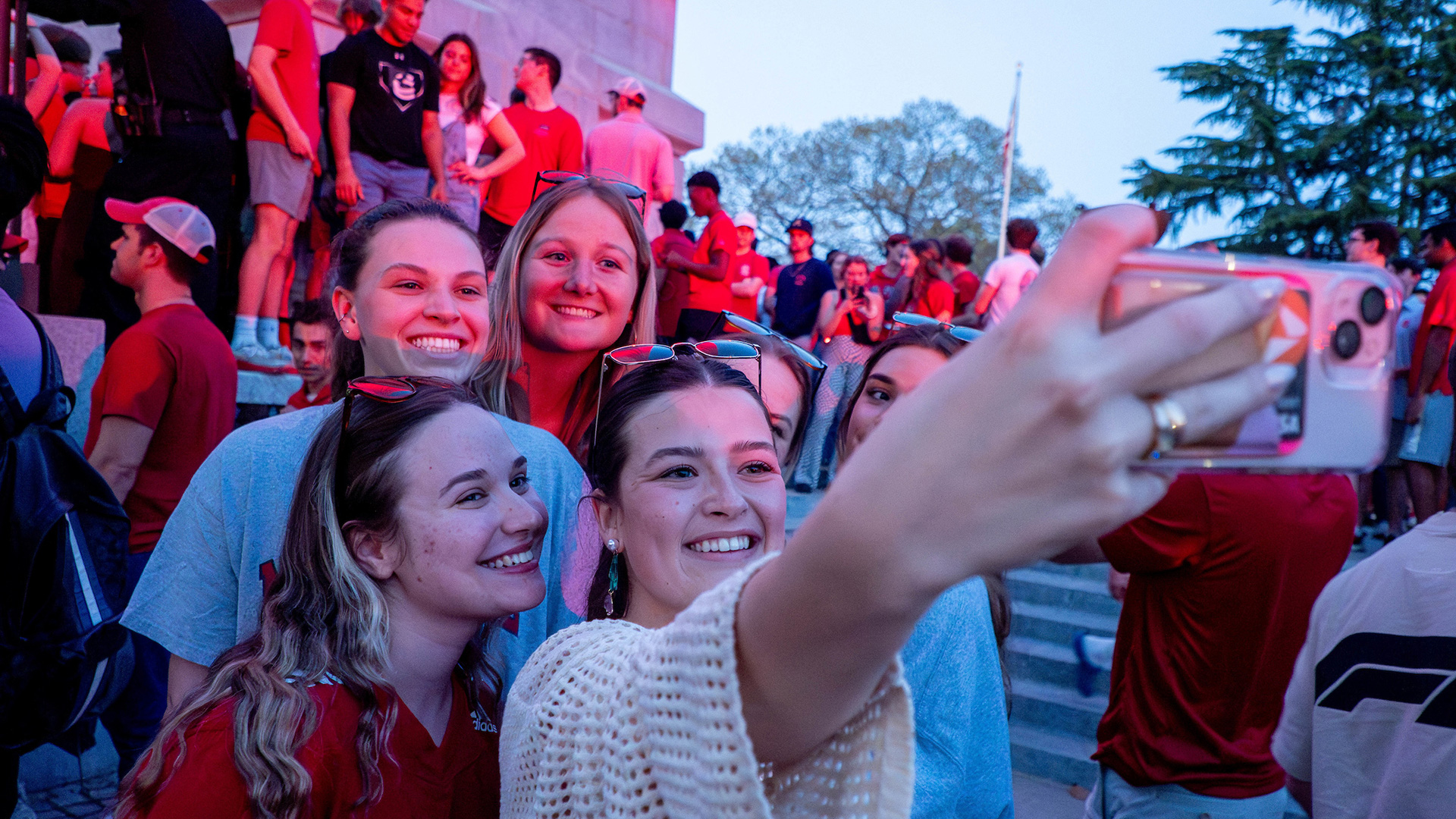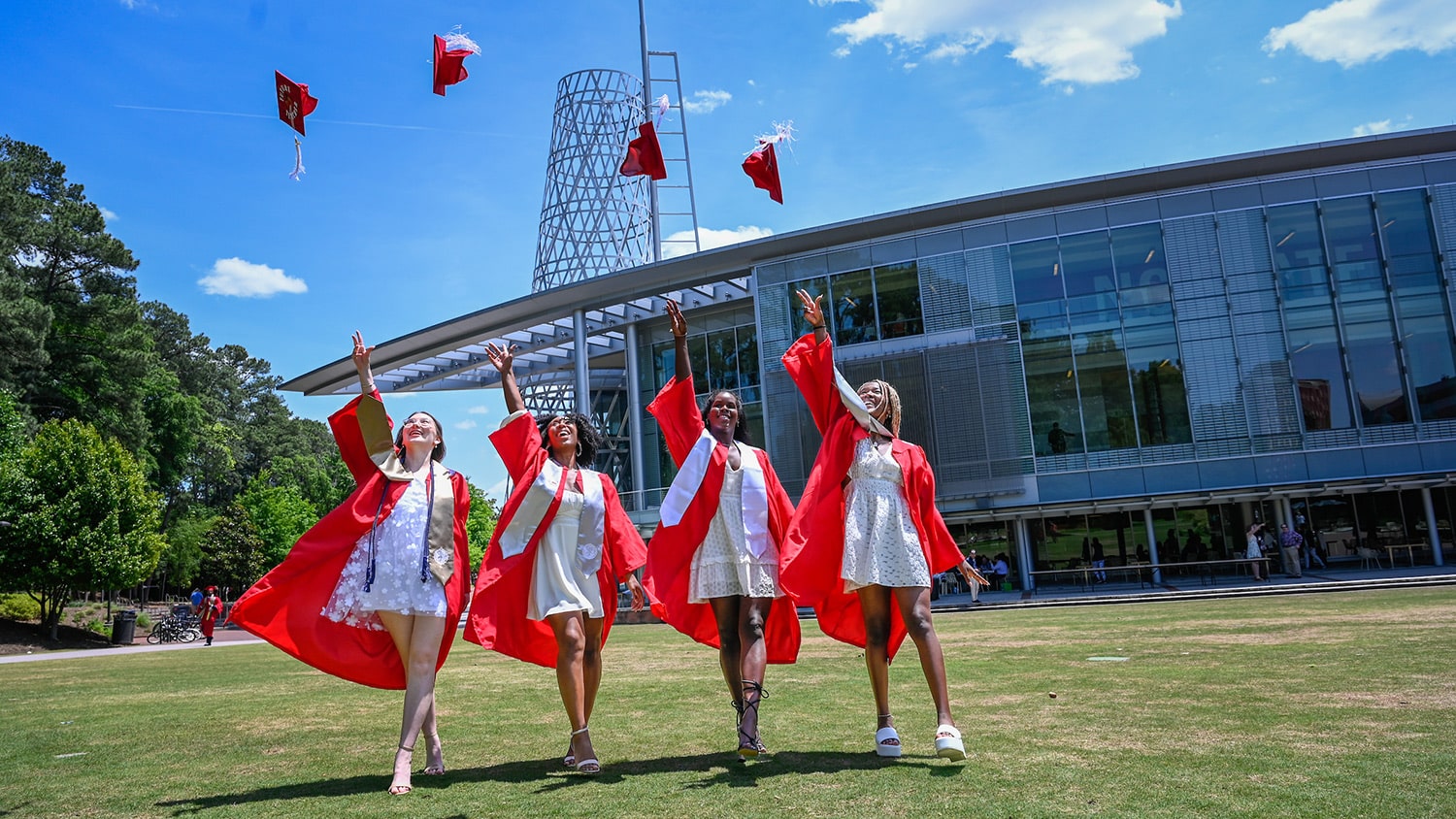Discover the Power of Design Thinking
Aspiring designers arrive at NC State with diverse dreams. In the College of Design, they learn how to mold those dreams into careers and apply the values of good design to improve the world around them.
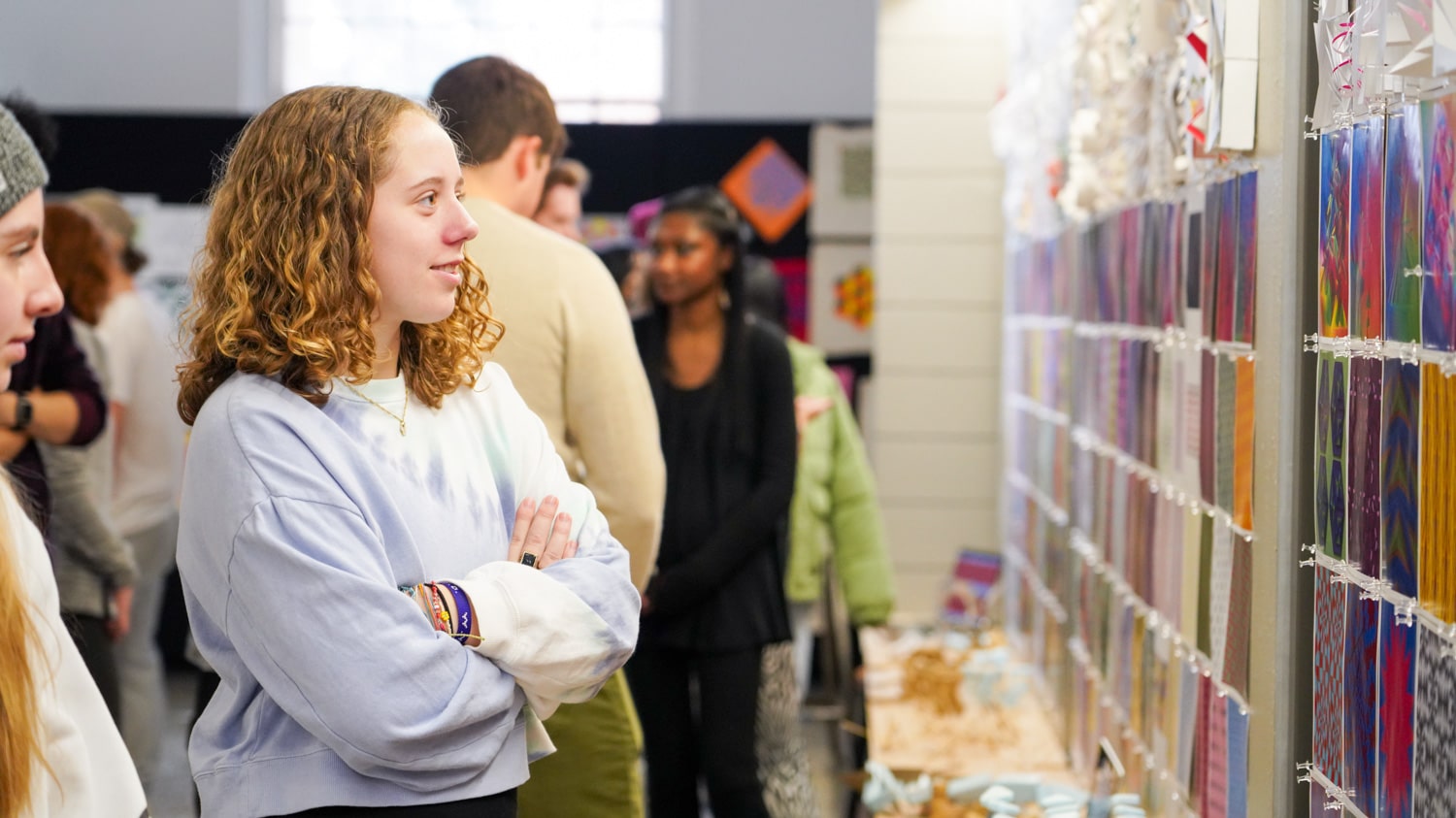
“Good design changes lives.” That’s a motto repeated often in the College of Design — and it’s certainly true for the students who come to learn in its classrooms and studios.
Students in the college can pick from one of five undergraduate pathways: architecture, design studies, graphic and experience design, industrial design, or media arts, design and technology. Each program prepares students for rewarding careers that enable them to bring the benefits of good design to the world, and most of these pathways offer graduate degrees.
But no matter which path you choose, the College of Design will immerse you in a community of creative thinkers who aren’t afraid to advance bold ideas, and help you connect your interests with the power of design thinking to shape the world for the better.
Find Your Focus in Design
From an early age, Cora Jones, a sophomore majoring in media arts, design and technology, knew she didn’t want to hold herself back from exploring the full possibilities of design. Traditional forms of art like drawing and painting grabbed her interests as a child, and those interests soon grew to include other artforms and experiences, like theater and digital art. It was this open-minded embrace of the creative process that drew her to the College of Design.
“I never saw myself doing anything outside of creating and designing and making things,” said Jones. “But when it came time to pick a college, I didn’t want to limit myself to just one form or medium. I wanted to be somewhere where I could diversify my skills, instead of just honing in on one specific area.”

Like Jones, Anna Bode, a senior majoring in design studies, grew up enjoying the creative process. Although she began her undergraduate studies majoring in marine biology at UNC-Wilmington, a “moment of realization” in her first semester convinced Bode that her true calling lay in design. She started to look for a school that could match her motivations.
“The College of Design appealed to me because of the interdisciplinary aspect of it,” said Bode. “I didn’t know exactly what I wanted to study, but I knew I wanted it to be related to design. Knowing that the college offered so many options, I felt I had the flexibility to assess the situation and choose where I wanted to focus once I got here.”
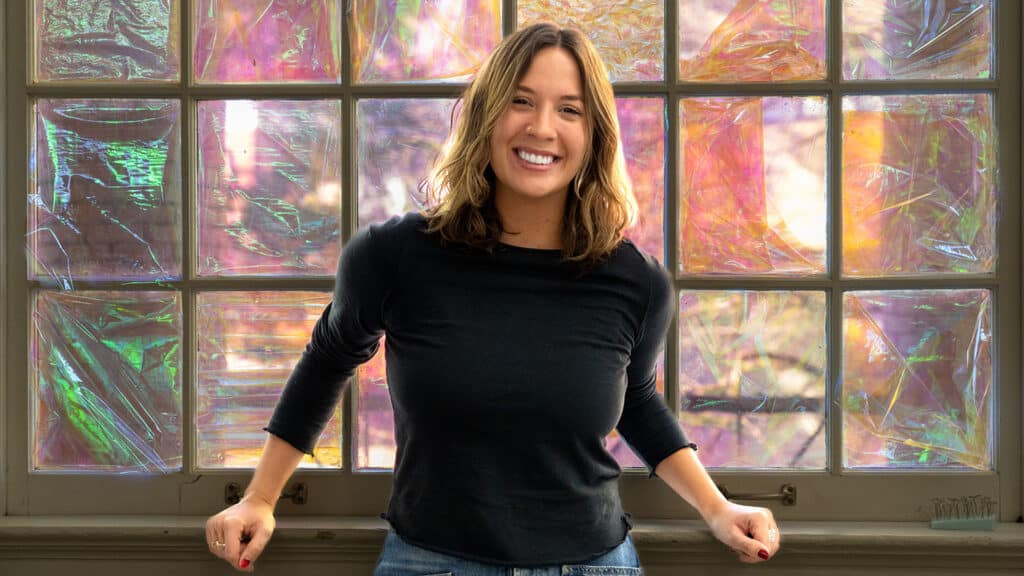
Bode and Jones found themselves in the right place, because the College of Design’s First Year Experience gives all incoming students a broad exposure to the field of design. The introductory, interdisciplinary program combines hands-on studio courses with courses focused on the principles and processes behind design thinking — an iterative, solution-driven and people-centered model of thinking that can be applied across many fields to address complex challenges.
“One of the best things about the First Year Experience is getting all the different perspectives from people and the variety of experiences they were bringing into it,” said Bode. “It provides a great foundation for everyone coming in.”
“You’re studying next to future industrial designers, architects and graphic designers,” said Jones. “It’s a great way to get you thinking, ‘Sure, I may someday want to make furniture or be an architect or an animator — but before all that, let’s take a step back and figure out how to be a designer, period.’”
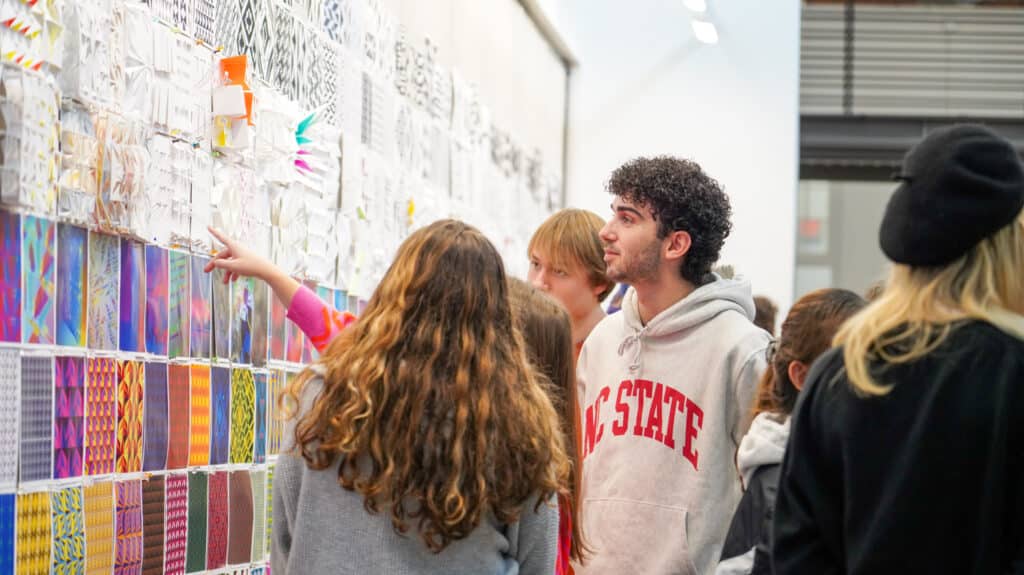
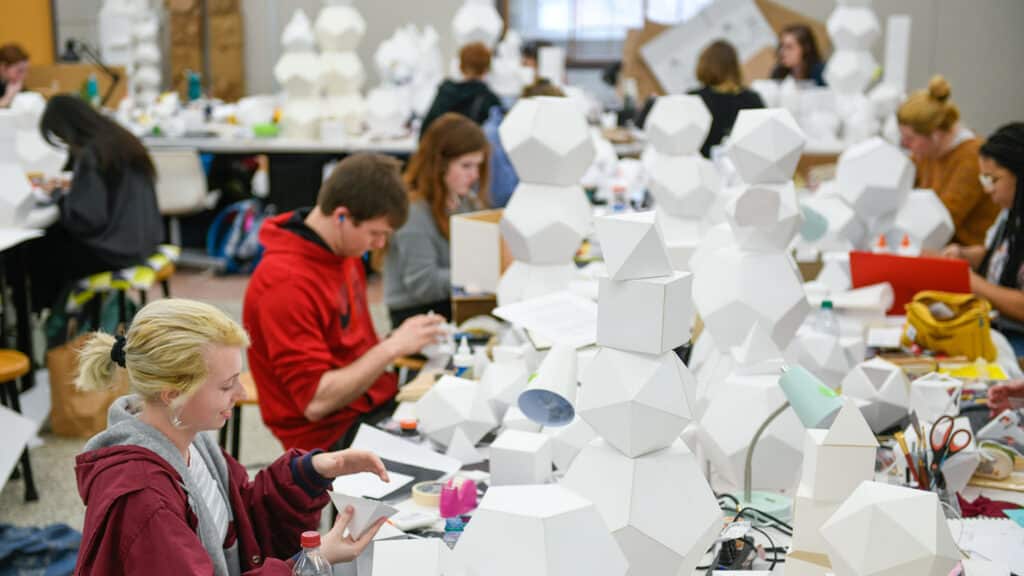
For first-year students, the fall semester features lecture and studio courses that intermix students who will go on to pursue different majors in the college. By the spring semester, students pick a focus and transition to discipline-based courses that impart the fundamental skills they’ll need for their majors.
Jones’ love for combining multiple artforms into her creative activities led her toward the media arts, design and technology major — often shortened to MADTech — which produces visual storytellers who are comfortable working across creative mediums. Bode’s interests in history and social issues drew her to design studies, a program that combines research, writing and exhibition to investigate how design influences — and is influenced by — human behaviors and values.
Grow Toward Your Interests
Once sophomore year rolls around, courses become geared even more toward specific design disciplines. Most of the pathways students can follow, however, continue to emphasize interdisciplinary learning. Jones, as a member of the MADTech program’s first cohort, appreciates that students in her major are encouraged to innovate and push beyond disciplinary boundaries as they grow with the program.
“What I particularly love about the MADTech program is the emphasis on experimentation and the fact that we’re not always building something to be functional in a way that, say, an architect designs a building,” said Jones. “Often, we’re working in a digital space and using images to tell stories that resonate with people.”
The job title I might have one day — maybe it doesn’t even exist today.
In one memorable assignment, a Halloween-themed multimedia project called “Motion and the Macabre,” Jones — not typically inclined to weave horror elements into her storytelling — went outside her comfort zone to create a stop-motion video that did just that. The video featured a dancer who, just as she’s starting her routine, removes her gloves to reveal a spooky surprise: the muscles of her hand hiding underneath.
“It was a project that involved a ton of mediums and pushed me to try something different, and I had so much fun with it,” said Jones. “I went to the Makerspace for the first time, which is free to use, and I printed everything I needed to get it done.”
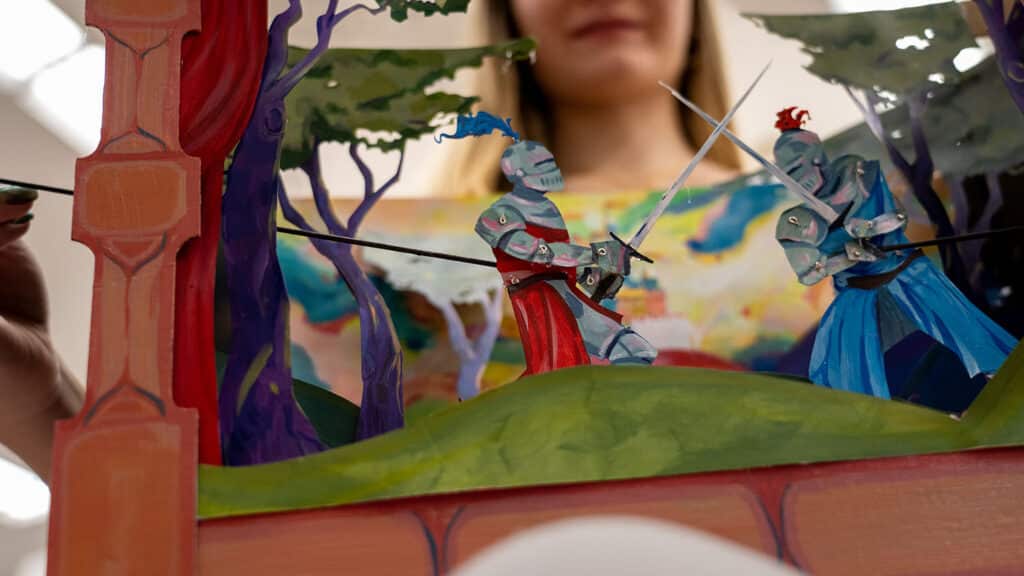
Inspired by the try-anything philosophy of her major, Jones embraces a variety of design-related experiences at NC State. She works as a design editor for the campus arts and literary magazine Windhover, and she even modeled for the college’s annual Art2Wear show, displaying articles of wearable paper that she created with other students as part of their First Year Experience.
Jones hasn’t decided which MADTech concentration she’ll pursue as a junior — soft construction and fibers, game design and interactive media or animation — and graduation is a few years off, but she feels confident that she’s acquiring the versatile design toolkit to excel wherever her path takes her.
“I feel myself growing toward a role as a creative director of some sort, and definitely working closely with other creative people,” said Jones. “But with how fast things are changing in the design industry, the job title I might have one day — maybe it doesn’t even exist today.”
I know that I want to design historical learning spaces that are accessible to everyone.
Bode, as a senior, is closer to defining her focus in design. Her early courses in design studies opened her mind to the many ways design intersects with human activities, and motivated her to better understand those intersections.
In one project, Bode and her classmates researched accessibility handbooks from real-world companies, then outlined key elements for designers to consider — like the use of ramps and braille signage — in designing environments that are accessible for all users.
“Ever since that project, I’m constantly walking around noticing designs that have those accessibility features built into them,” said Bode. “And I also notice designs that might be lacking them, where someone could come in and make that experience better for people.”
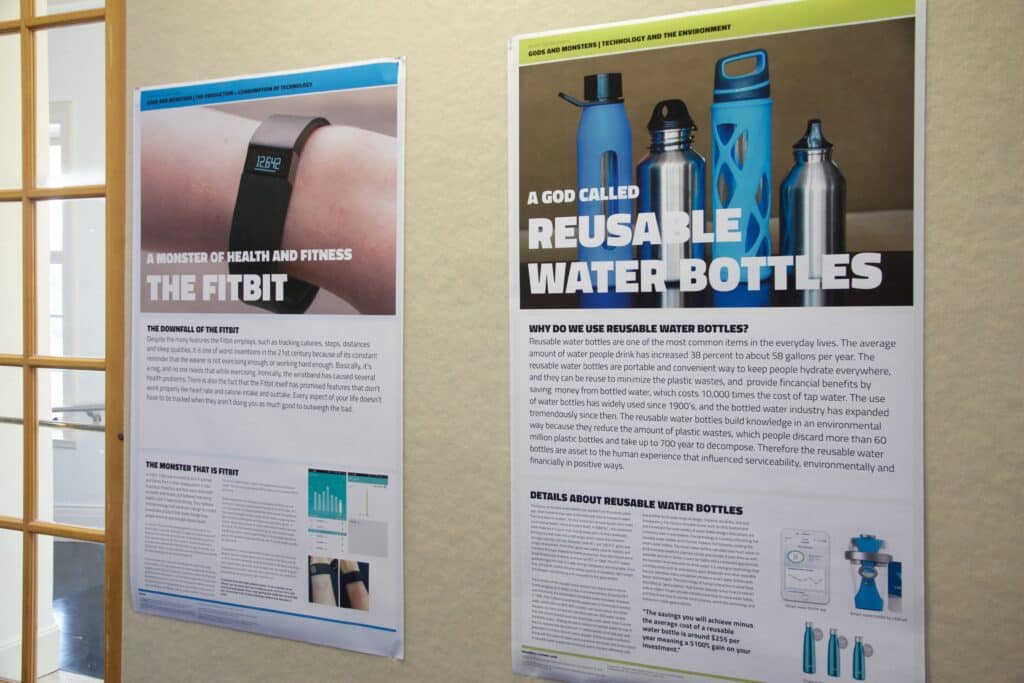
As a history minor, Bode tailored her studies to incorporate her historical interests and explore the role of design in shaping societal values. In her senior capstone project, she’s analyzing the shift to modern art that took place from the mid-19th to the mid-20th centuries as she seeks to explain how that shift influenced cultural movements and countermovements.
“At first, I thought my capstone had to fit rigidly into the confines of design,” said Bode. “I didn’t feel like I could blend design and history in the same project. But my professors gave me the opportunity, confidence and assurance to do it.”
Bode pictures herself designing exhibits — possibly in a museum setting — to help people better understand how history has molded human experiences. She plans to apply to NC State’s Master of Arts in Public History program, and she’s confident that the knowledge she’s gained in the College of Design will help her achieve her goals.
“I’ve learned that a lot of bad design has come from designers only thinking about themselves as the user of a product or experience, which can limit that experience for many users,” said Bode. “I know that I want to design historical learning spaces that are accessible for everyone.”
Level Up Through Graduate Studies
The College of Design puts its graduates in positions to succeed, wherever they choose to go; it also provides plenty of opportunities for them to grow within the college, as graduate students.
Tatiana Veloso came to NC State from her home country of Brazil in 2022 to study in the Master of Landscape Architecture (MLA) program, drawn by the reputation of its world-class faculty and the opportunity to learn from them. As an undergraduate, she merged her interests in engineering and design to find her focus in architecture and urbanism. For her graduate studies at NC State, she shifted slightly, to landscape architecture, where she feels she’ll have the greatest hand in improving the spaces that shape people’s daily lives.
“What interests me is public space, designing public spaces and thinking about how to advance social equity and environmental justice in the public realm,” said Veloso.
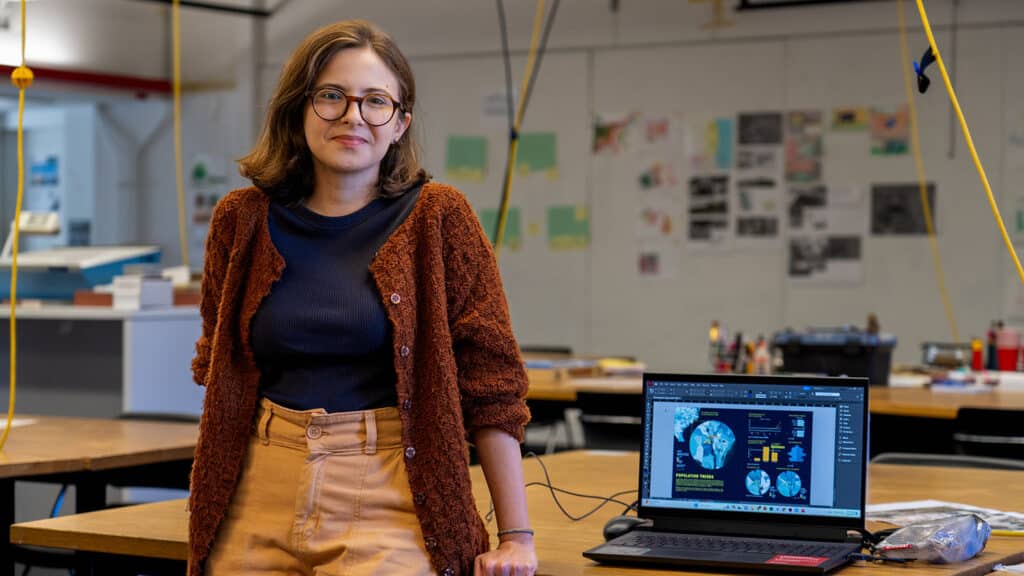
Now in her final semester, Veloso is preparing for her comprehensive MLA oral exam, her last major milestone before she graduates this spring.
For the exam, students choose topics — their “design imperatives” — that reflect what they believe is their greatest purpose as a designer. Veloso is focusing on the unique challenges confronting community planners in Rio de Janeiro, on the coast of her native Brazil, where 1.5 million people live in impoverished conditions in informal settlements called favelas. In these neighborhoods, the risks from natural hazards, like flooding, have only worsened with a warming climate and with increased development in the surrounding city.
“My topic is looking at how to co-create climate resilience with residents of these settlements in a way that’s equitable and that incorporates community engagement,” said Veloso. “It’s all about preparing these environments for climate change and risk in general, and improving the well-being of these communities.”
Everybody has a different process to design, and the best part is that we all get to learn from each other.
In her studio courses, Veloso is gaining hands-on experience navigating the same kinds of land use problems her design imperative is aimed at solving. She’s also strengthening her ability to collaborate with stakeholders and with other designers.
This semester, Veloso and her classmates are helping to analyze the climate-related vulnerabilities facing a small urban community in southeast North Carolina, as they work with that community to implement resilient landscape solutions, such as cultivating “living shorelines” of vegetation along a riverfront to manage flooding.
“We were just in the Wilmington area to learn more about the community, Belville, that we’re designing solutions for,” said Veloso. “We ate dinner together and then walked around the area to get to know the waterfront and the town center. Those site visits, where I get to know North Carolina and my classmates better at the same time, are among my favorite experiences in the program.”
Veloso is not yet sure where she’ll be headed after graduation, but she feels her experiences in the College of Design are preparing her to implement professional solutions in real-world communities, and contribute to more equitable and sustainable designs. When Veloso speaks of her experiences in the MLA program, she could easily be speaking for the college as a whole.
“The faculty are doing amazing research on the cutting edge of different areas of design, and many students are involved in that research as well,” said Veloso. “As a cohort, we exchange ideas and help each other work through problems. Everybody has a different process to design, and the best part is that we all get to learn from each other.”
- Categories:

